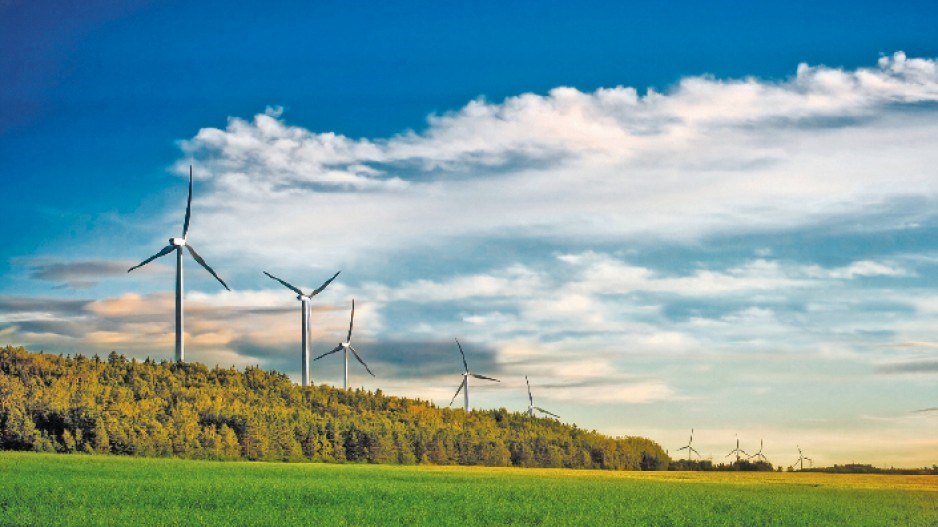A junior wind-energy developer in Vancouver is selling its B.C. assets, which it claims could annually generate $100 million, for $40 million.
Finavera Wind Energy Inc. (TSX-V:FVR) has struck a deal with Pattern Renewable Holdings Canada ULC, which would acquire all of Finavera’s B.C. wind assets – all of them still undeveloped – in the Peace River region.
It’s the latest in a series of mergers and acquisitions expected to take place in the coming months, as smaller players in the clean-energy field – unable to raise the capital for multimillion-dollar projects – sell out to the bigger players.
Finavera estimates the four projects would generate $100 million annually through electricity sales to BC Hydro.
Under the proposed sale, Pattern would own 100% of Finavera’s B.C. wind portfolio. The only wind-energy asset Finavera would retain would be a 10% share of a 105-megawatt wind project in Ireland.
The sale must still be approved by shareholders in March. It’s also contingent on Pattern raising the capital it will need to finance Finavera’s B.C. projects, only one of which – a 47-megawatt wind farm in the Tumbler Ridge area – has received a certificate from the Environmental Assessment Office.
Finavera is not the only Canadian renewable energy company that has been trying to unload its North American renewable energy assets.
Western Wind Energy Corp. (TSX-V:WND), which owns wind and solar power projects in the U.S., has been trying to find a buyer but has been holding out for a better deal than the cash offer of $2.50 per share made recently by Brookfield Renewable Energy Partners L.P. (TSX: BEP.UN), a major Western Wind shareholder.
Meanwhile, Toronto-based Sprott Power Corp. (TSX:SPZ) announced January 10 that it’s considering selling the company.
Although wind turbines have become cheaper and more efficient, and operating expenditures are low (no fuel costs, for example), the upfront capital costs for wind farms and transmission lines are significant.
For example, Finavera’s four B.C. wind farms in the Peace River region would cost $800 million to build and would produce 300 megawatts of electricity (enough to power about 120,000 homes).
Governments and utilities, once willing to pay a premium for clean power, are becoming less likely to do so, and small clean-energy developers have seen their market caps shrink and risk capital dry up.
“Because there’s been this flight to yield, it’s really become a very difficult thing to have a development-oriented company because there’s no risk capital available,” said Donald McInnes, executive vice-chairman of Alterra Power Corp. (TSX:AXY) and chairman of Clean Energy BC.
John Safrance, a clean energy utilities analyst with Cantor Fitzgerald, agrees that capital is the key challenge.
“If you don’t have existing cash flow to at least support the partial build-out of new projects, investors view that negatively, and it becomes a negative feedback loop.”
Safrance added that some companies with wind projects in B.C. might have been overly optimistic when calculating how much their projects could generate through electricity purchase agreements with BC Hydro.
“They may have had the lowest bid, but when you get down to it and you sharpen your pencil, the economics of the project based on the [electricity purchase agreements] awarded based on your bid may not make sense from an economic return perspective.”




